Magazine
Hindutva’s War Against Racism
Aravindan Neelakandan
Aug 16, 2015, 12:30 PM | Updated Feb 11, 2016, 09:51 AM IST
Save & read from anywhere!
Bookmark stories for easy access on any device or the Swarajya app.
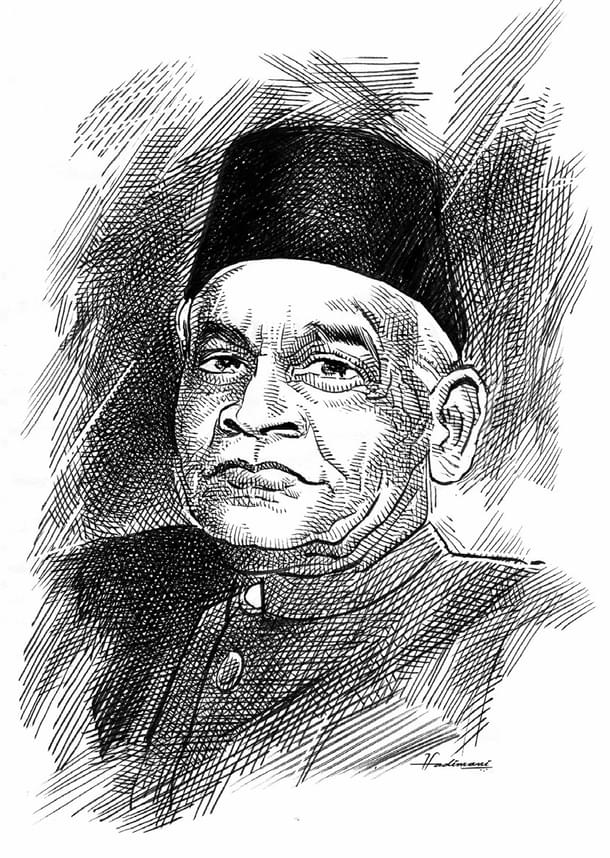
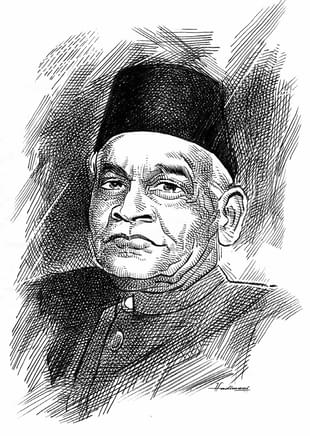
Though Nehruvian-Marxist historians have tried to present Hindutva as a form of racism, the truth is that Hindutva has always abhorred racism. This is the not-so-well-known story of Dr Narayan Bhaskar Khare’s fight against apartheid in South Africa.
Most western scholars and Indian academia with strong Nehruvian-Marxist leanings have always tried to present Hindutva as an Indic breed of racism. Such attempts more often than not lead to the construction of convoluted narratives bordering on the ridiculous, steeped in almost meaningless jargon.
Consider this passage by Prof Chetan Bhatt who teaches sociology at the London School of Economics (LSE), and is director of the LSE’s Centre for Study of Human Rights: “The Hindutva movement condenses numerous themes about ethnogenesis, religious authoritarianism, cultural absolutism, the nature of secular post-colonial citizenship, majority-minority relations, and ‘racial’ and ethnic hatred that often appear separately in other examples of contemporary religious ethnic conflict. In this sense, Hindutva ideology can represent a universal example of the numerous directions that absolutist and totalitarian ideologies can travel in the late modern period. Similarly in describing Hindutva ideology using conventional theoretical paradigms, none of the analytical concepts of race, racism, religion, ethnicity or culture on their own suffice. But all are deeply relevant in a combination that perhaps requires a new description as perhaps do many other contemporary ‘absolutist ideologies of indigenism’.”
Though Bhatt accuses Hindutva of harbouring “a powerful hereditarian ‘race concept’”, he is aware of the fact that it has “little to do with western scientific racism”. According to him, unlike in the West, where “opposition between biology and culture” defines the position of racism, in Hindutva, the culture itself contains “powerful epistemic resources” which provide “sentimentalist racism”. He relates this in turn to “primordial origin myth” and goes on to claim that “this kind of racism” is “virtually definitive of Hindutva discourse”. (Chetan Bhatt, Hindu Nationalism and Indigenist ‘Neoracism’, in Theories of Race and Racism: A Reader (Ed. Les Back, John Solomos, Psychology Press, 2000, p.574)
Shorn of the jargon, what actually the passage says is that though Hindutva cannot be considered racist in terms of what historically racism has been, by tying Hindutva with caste, and caste with the origin myth in Purusha Suktha, the sociologist invents a means to categorize Hindutva as racism—even when it does not fit the category of racism.
However, Hindutva does not cling to the caste system or varna as the basis or defining aspect. None other than Veer Savarkar makes it clear in his work Hindutva. The socio-cultural history of India is also replete with instances where social stagnation is resisted through the spiritual essence of Indian culture. Dr Ambedkar had rightly pointed out that the Upanishadic concept of Brahman has provided India with a strong spiritual basis for social democracy, while the smriti-based religious movement nurtured social stagnation.
It can be observed that while the social stagnation provides a literal interpretation of the myth of primordial Purusha, symbolizing the organic unity of society through different sections of the society emanating from his body parts, the social emancipation movement which is an integral part of Indian culture and society has often worked against such an interpretation, and emphasized the divine equality of all humans.
The modern era commenced in India with the advent of the colonial regime. While the orthodoxy emphasized a socially fundamentalist interpretation of the origin myth, Hindu nationalists mostly rejected such an interpretation. When Nehruvian aversion for Hindutva, along with the Marxist model, became the dominating framework for Indian social studies, stereotyping of Hindu nationalists as homegrown “racists” began in earnest.
Savarkar, in Hindutva, not only rejects the idea of caste as the defining feature of Hindu culture but he consistently argues for the abolition of the caste system. Contrary to how academics like Bhatt try to portray Hindutva as a form of “desi” racism based on “a powerful hereditarian ‘race concept’”, Savarkar argues against the so-called scientific arguments put up by the orthodoxy in favour of the caste system. Sure enough, the justification of the caste system based on Western notions of eugenics had resulted in an argument not very dissimilar to the nature vs nurture debate, in which the notion of racism was placed in the Western realm. But Savarkar’s arguments clearly show on which side of the fence he stands. In a hard-hitting statement too radical for the time it was written (and even for some of the orthodoxy of today), he said:
“Heredity is not the sole determinant of merit; rather it is one of its many determinants. Even if inbreeding occurs, change in other factors such as light, food, water, climate, mental makeup of ancestors, their upbringing, education, availability of opportunity and means enhance or diminish or change the innate merit of children. Even where inbreeding occurs, like good qualities, bad qualities too may get enhanced or accentuated….Even if inbreeding occurs, the good qualities of ancestors may occasionally diminish or get distorted with passage of time. In such circumstances too, cross-breeding proves beneficial to animals. While it is possible to maintain blood purity by inbreeding in case of natural species, it is virtually impossible to maintain it if the same is ordained by scriptures or belief. And in those Hindu castes such as the Brahmins etc too which have strict rules regarding inter-marriages, cross-breeding has been occurring for generations past as ordained by scriptures or secretly due to sexual attraction. This will undoubtedly continue in future too and hence even if inter-marriages are strictly prohibited, the very belief that the son of a Brahmin has the innate qualities of a Brahmin or that the son of a Kshatriya must be naturally imbued with the qualities of a Kshatriya needs to be discarded. This is because of the fact that due to cross-breeding between all our castes from time immemorial, no caste can claim monopoly over a specific merit.” (Savarkar, 1931, Essays on Abolition of Caste, Collected Works, Vol. 3, p. 472)
It is obvious that Savarkar totally rejected the argument that the caste system was based on some kind of genetic knowledge that ancient Indians gained. However, he was not apologetic about caste as part of the Indian heritage. It was a great experiment but a failed experiment, he noted. And collective human knowledge has been enhanced by our failed experiment, he opined. Interestingly, Theodosius Dobzhansky, the Ukrainian-born American geneticist and one of the key figures in the development of evolutionary biology, expressed the same sentiments: “The caste system in India was the grandest genetic experiment ever performed on man.” (Genetic Diversity and Human Equality, 1973, p 31).
Even more damaging for the academics and activists who accuse Hindutva of racism of any form are the views that Savarkar puts forth on the fundamental unity of humanity: “After all there is throughout this world so far as man is concerned but a single race—the human race kept alive by one common blood, the human blood. All other talk is at best provisional, a makeshift and only relatively true. Nature is constantly trying to overthrow the artificial barriers you raise between race and race. To try to prevent the commingling of blood is to build on sand. Sexual attraction has proved more powerful than all the commands of all the prophets put together. Even as it is, not even the aborigines of the Andamans are without some sprinkling of the so-called Aryan blood in their veins and vice versa. Truly speaking all that anyone of us can claim, all that history entitles one to claim, is that one has the blood of all mankind in one’s veins. The fundamental unity of man from pole to pole is true, all else only relatively so.”
If one compares the way Savarkar denies any “pure blood” of any single race in the context of humanity with the way he denies “purity” for even the so-called high-caste Brahmins with strict rules for “inbreeding” in the Indian context, then one thing becomes clear. In both the cases, he points out that sexual attraction prevails in a defining and dominant way over the “artificial barriers” put forth by “all the prophets” (in the case of races and entire humanity) and how it is “virtually impossible” for the scriptures to maintain “inbreeding” (in the context of castes and entire Hindu society).
Once again, Savarkarite Hindutva provides a far more radical anti-racist perspective than any of the social views then prevalent. As an interesting aside, one can see that he even qualifies the term “Aryan blood” with the adjective “so-called”—clearly an expression of innate scepticism, though at that time “Aryan race” was accepted as a proven category.
It is with this ideological framework that one has to see the contribution Hindutva made to the global fight against racism.
HINDUTVA AGAINST APARTHEID: A FORGOTTEN HERO
In July 1914, Gandhi returned from South Africa to India, following his monumental moral and spiritual victory over General Jan Christian Smuts (1870-1950). However, the material conditions of Indians in South Africa did not improve much. In fact, South African Indians saw newer and newer laws take away their livelihood freedoms one by one.
Thus, since 1919, the Asiatic private companies were not entitled to hold fixed properties. The Mines and Works Act debarred Indians from becoming skilled workers. In 1932, the Asiatic Land Tenure Act also debarred any Asiatics (read Indians) from even holding shares in minority, in any company.
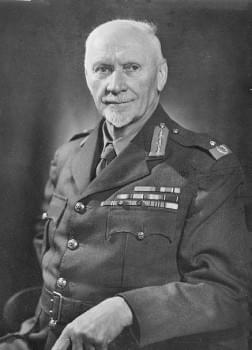
In 1939, General Smuts further introduced an interim Asiatic Land and Tilling Act. It restricted Indians economically well within the areas which were “pegged” as their community area. The Act evolved even more menacingly by 1943. General Smuts, the friend of the Mahatma, was the Prime Minister of South Africa. The interim Act of 1939 was renamed the Pegging Act and was extended to both Transvaal and Natal. The result was that 24,000 Indians were confined to 200 acres in Transvaal and Natal, while 7,000 Whites were given 5,000 acres at their disposal.
Ahmed M. Kathrada, a veteran of the South African liberation struggle, records the response of the Natal Indian Congress (NIC) to what Smuts did, and the counter-response of the apartheid regime to the NIC’s appeal:
“In line with their established response, the leaders of the Natal Indian National Congress sent a deputation to convey to Smuts their dissatisfaction with the law, and to plead with him to repeal it. They did manage to secure an undertaking that the law would be repealed, but the quid pro quo was the humiliating and spineless suggestion by the Indian politicians that in place of the Pegging Act, the government should set up an Occupation Council Board to regulate Indian residence in white areas. The board would consist of two Indians and three white members, which meant, in effect, that it could do exactly what the Pegging Act was designed to do, except that Indians would themselves be complicit.” (Ahmad M. Kathrada, Memoirs, Zebra, 2004, p 39)
With this timid capitulation by the NIC, the fate of Indians in South Africa seemed sealed. At this point, it was a fierce Hindu nationalist who came to the rescue of the people of Indian origin in South Africa, and through the process, opened up a new strategy for the fight against the apartheid regime in the future.
Dr Narayan Bhaskar Khare is better known as the Hindu Mahasabha leader who made that caustic remark about Nehru being “an Englishman by education, Muslim by culture and a Hindu only by the accident of birth”. Less known is the fact that he earned the displeasure of the Congress high command when he made a Dalit one of his cabinet ministers.
When Dr Khare refused to yield ground, he had to pay with his dismissal by the Congress high priests. His parting with the Congress was bitter. Decades later, none other than Rajaji conceded to Dr Khare that he was “treated badly by a powerful organization which did not suffer from any lack of arrogance”. (Rajmohan Gandhi, Rajaji: A Life, Penguin Books India, 1997, p 413).
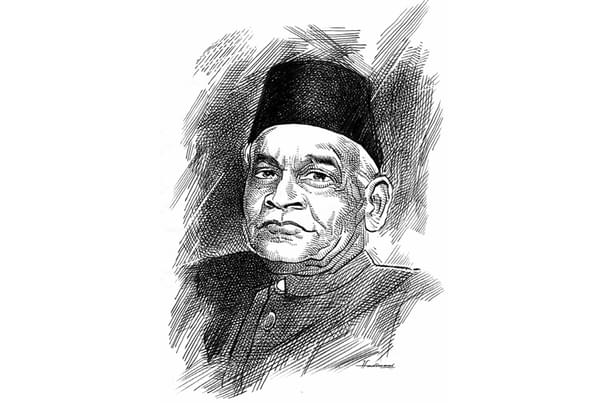
As a member of the Viceroy’s executive committee, Dr Khare was also in charge of the department of Indians Overseas. But the Viceroy had overriding powers. Despite such a disadvantaged condition, Dr Khare strongly advocated retaliatory measures for safeguarding the welfare of the people of Indian origin in South Africa. There was one such law he learned of, but it had legal and technical difficulties in actually getting implemented. So Dr Khare quickly made amendments to the law and within the same month of Smut passing the law damning Indians, Khare succeeded in placing on the statute book the Indian Reciprocity Act Amendment Bill. Then he started demanding that it be implemented against South Africa.
That in itself was a great accomplishment but now the real challenge was to make the British Viceroy implement this against South Africa. He also cautioned the British that war cannot be made an excuse for South Africa to humiliate its citizens of Indian origin. He made himself bluntly clear in the Council:
“Same means must be found for maintaining the dignity and prestige of Indians and the Government of India, even in wartime…Had India been independent, she would have considered this a casus belli against South Africa.” (Hugh Tinker, Separate and Unequal: India and the Indians in the British Commonwealth, 1920-1950, C. Hurst, 1976, p 226)
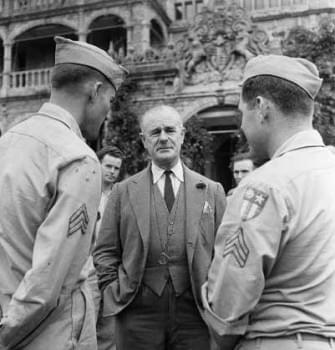
In October 1943, the new Viceroy, Archibald Percival Wavell had arrived in Delhi. When Dr Khare met him and raised the issue of South Africa, he discovered that the Viceroy, like Mahatma Gandhi, considered Smuts “a good friend and a thorough gentleman” and hence “would not allow enforcing the decisions against South Africa” and “would not allow anyone to do anything against Smuts”. Khare, in his own words, was totally dejected, and yet his repeated and harsh interventions in every executive council meeting forced Wavell to act.
Though today this Hindu nationalist’s role in South African history is almost forgotten, even biased British historians are forced to acknowledge that it was the “sharp words from Dr Khare” which made Wavell telegraph his “very good friend” that “unless he can give satisfactory answer now”, Khare would press for drastic action against South Africa. (See, for example: Lorna Lloyd, A Family Quarrel: The Development of the Dispute over Indians in South Africa, The Historical Journal, Vol. 34, Issue 3, September 1991, p 711 )
On April 15, 1944, the Indian High Commissioner in South Africa was made to give a note to Smuts, threatening countermeasures. Three days later, the Pretoria regime came out with the so-called Pretoria Agreement, partly in consultation with the Natal Indian Congress. This too was racially biased against the Indians. It essentially meant that Indians would agree to residential restrictions, but the Pegging Act would be withdrawn only after an ordinance had been passed by Natal legislature (where even the Indians would be represented only by white men).
Even this was too much for the Whites. Sensing the dissatisfaction of the white population, Smuts quickly announced that his government would extend the Pegging Act for all time to the whole of Natal.
Indians in South Africa were shocked by this abject betrayal. Back in India, at a meeting of the Central Legislative Assembly, Dr Khare echoed the sense of betrayal and minced no words and declared: “I wish India was in a position to declare war against South Africa, here and now.” Sir Ramaswamy Mudaliar, the Member for Industry and Civil Supplies, announced that if a force was raised to attack South Africa, he would enlist.
Dr Khare telegraphed the British government about the mounting displeasure in India. This led Viceroy Wavell to personally caution Smuts about the increased Indian pressure that might force the British government to take action against South Africa. Finally, Dr Khare’s efforts made history of sorts when a not-yet independent India implemented the Reciprocity Act against South Africa, an independent state.
This was essentially symbolic. But Dr Khare was not satisfied with such symbolic gestures and moral victories. Meanwhile, the Second World War had come to an end, and by June 1945, the League of Nations was being reconstituted and established as the United Nations. Dr Khare now came up with a radical new plan that completely transformed the terrain of the fight for justice in South Africa.
He decided to submit a memorandum to the United Nations against South Africa and announced this to the media—the Associated Press of America in Delhi. This created shock and uproar in many circles—from the Viceroy to the bureaucratic establishment. Dr Khare describes the response of the establishment to his announcement of going to the UN:
“The Associated Press of India took very pointed notice of my interview with the Associated Press of America in Delhi and of my speeches made in Nagpur. On account of this, the bureaucratic atmosphere of the Government of India in Delhi became hostile to me and I was accused of making irresponsible speeches and giving irresponsible interviews without making any reference to the Government of India. One of my colleagues said to my face that an ICS would never have behaved irresponsibly like that…Viceroy also charged me with irresponsibility…and there was great bitterness between me and the Viceroy…Lord Wavell the Viceroy did not at all like my attempt to lodge a complaint against South Africa before the UNO. He tried his level best to dissuade me from this attempt.” (Narayan Bhaskar Khare, My Political Memoirs, or Autobiography, J.R. Joshi, 1959, pp 171-3, p 177)
But Dr Khare stood his ground. He forced the Viceroy to consider going to UNO by bringing an adjournment motion in the legislative assembly. The Viceroy, who considered the proposal “irresponsible”, had asked the secretary of India’s external affairs department, Hugh Weightman, to see if there was any substance to Dr Khare’s announcement.
Weightman, who also thought India going to UNO was an “ill-considered action” which would have “grave repercussions”, asked his undersecretary to see if there was anything to it. To the shock of both Wavell and Weightman, the undersecretary came back with the finding that India “would have every right to raise the question” at the General Assembly (and not at the Security Council, as originally intended by Dr Khare) of the United Nations.
Things were becoming somewhat favourable for the Indian cause. Winston Churchill, who had an intense hatred for India, had been defeated in the UK general elections of 1945. By January 1946, Dr Khare’s cabinet colleague Ramaswamy Mudaliar had been appointed head of the United Nations Economic and Social Council. He had informed in the legislative council that Khare’s efforts would be put into action as soon as South Africa makes the bill a permanent law.
In April 1946, Dr Khare succeeded in making the Indian government withdraw the high commissioner to South Africa. But there was still pressure from British bureaucratic circles to dissuade Dr Khare from raising the issue in the UNO.
Arrogant and oblivious to such protests, General Smuts went ahead and made the Asiatic Land Tenure and Representation Act a permanent law on June 1946. Meanwhile, there were efforts on to install a caretaker government by September which would be a Congress government under Jawaharlal Nehru. Dr Khare had to hurry and make sure that the issue would be submitted to the UNO so that the Congress government with the Nehru-Gandhi high command would not be able to reverse or dilute it. Through the services of his secretary R.N. Banerjee, a lengthy memorandum was prepared that studied the various aspects of the racial discrimination of the South African regime and drew a parallel to “the Nazi principles and practice of race superiority”.
Perhaps, Dr Khare was the first person to compare the policies of Pretoria regime to those of the Nazis in an international forum, which would later evolve to have its own dynamics.
The draft of the memorandum running to 18 pages was sent by air telegram to Mudaliar, who, on 22 June 1946, submitted it to Mr Trygve Lie, secretary-general of the United Nations. Satisfied that he had achieved his primary goal for South African Indians, Dr Khare quit his office in September 1946. But the Nehru government saw to it that he never got the appreciation for the work he had done against a racist regime.
It was the first pioneering seed so painstakingly planted by Dr Khare that eventually became the international sanctions against South Africa a few decades later.
Thus, from Vinayak Damodar Savarkar to Narayan Bhaskar Khare, the contribution of Hindutva to the fight against racism has been, both theoretically and in terms of action, well-defined and true. Yet it is a strange paradox that Hindutva itself gets discussed today in international academia and media as if it is a “desi” version of racism.
This article was published in the August 2015 issue of Swarajya.
Aravindan is a contributing editor at Swarajya.





